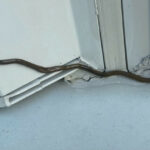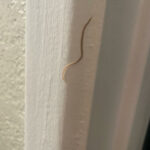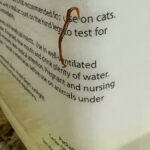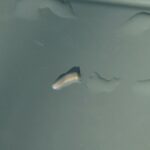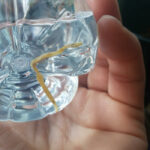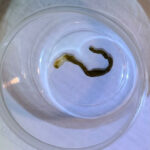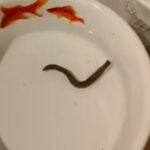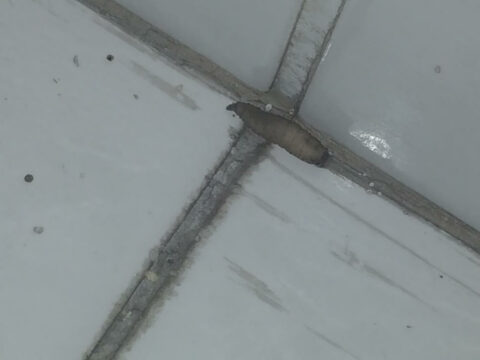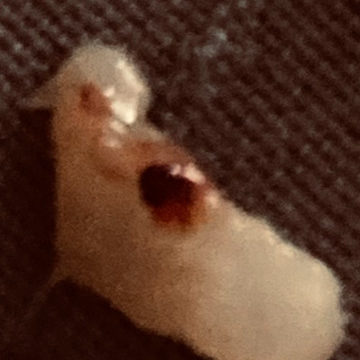
“This worm was crawling up my shower window”, writes PG in her submission regarding the beige-colored, worm-like critter pictured below. “I think it resembles the invasive hammerhead flatworm but does not have the crescent moon-shaped head. Do you know what type of worm it was? I’m located in southeast Texas.” From the photo, we cannot determine a specific identification, though we agree with PG that it could be a flatworm, as there are species of flatworms with this coloration. We do not agree that it is a hammerhead, for the very reason that PG gives: it does not have the eponymous hammerhead.
Of course, there are a lot of other species of flatworms. Terrestrial flatworms are generally not dangerous, but one will want to avoid making direct physical contact with them, as they can secrete toxins which can cause allergic reactions such as pain, itching, and/or rashes. That said, since this worm was found in the shower, there is a slight chance that this is an aquatic flatworm and not a terrestrial one. Of course, there are also species of flatworms that can survive in both environments. Aquatic flatworms can likewise possess harmful toxins, so we advise avoiding physical contact in any case. We recommend moving the worm outside by moving it onto a dustpan using a spoon or some other kind of oblong object.
The reason most worms end up in people’s showers when they do is because they enter through a leak in the underground sewage pipes. If PG notices that the water coming out of her faucets is discolored, foul-smelling or -tasting, or that the water pressure and/or temperature is inconsistent, the leak might be somewhere nearby and could be fixed by a professional. But it is also possible that this worm entered the pipes a long ways away. It is also possible that this worm did not come up through the drains at all but came in from the outdoors and ended up in PG’s shower. The best way to prevent worms from entering one’s home is to ensure that any torn window screens are mended or replaced, sealing cracks in walls and floors, storing dried foods in airtight containers, removing piles of organic debris like rocks and sticks from one’s yard, and keeping one’s home dry and warm. With all of that said, people can often accidentally bring in worms and other critters on their clothes or shoes!
To conclude, we think it is possible that the worm PG found in her home is a flatworm, though we are not entirely sure of this. In any case, we recommend PG move this worm outside while avoiding direct physical contact. Since she only found the one worm, this was probably a one-off thing. We hope this helps, and we wish PG the very best!
All About Worms is always free, always reader-supported. Your tips via CashApp, Venmo, or Paypal are appreciated! Receipts will come from ISIPP Publishing.
You might also find these guys interesting!




